This report presents six easy-to-read charts about differences in the average dollar value of employee ownership by the annual earnings, gender, and race of employees. As averages, this gives a snapshot from random samples from employee surveys from the US General Social Survey across the entire US population. It answers the question: How broadly has employee share ownership’s financial benefits spread among working people?
The focus is on employee equity ownership plans and Employee Stock Ownership Plans (ESOPs), separately. Employee equity ownership plans involve grants of restricted stock, performance shares, Employee Stock Purchase Plans, and company stock ownership in 401(k) plans, etc. and do not include ESOPs. The results specifically on ESOPs are broken out and presented separately. Data are from the 2022 General Social Survey using previous surveys from 2018 and 2014 for a larger national sample.
In an economy where the interests and successes of workers and businesses too often seem in opposition, employee ownership offers a solution. Clegg Auto, an auto repair company with locations in and around Provo, Utah, is leading by example. By converting to an employee ownership trust, Clegg Auto lets its workers share in the profits, gives them a say in the workplace, and protects the company’s place in the community.
This profile of Clegg Auto illustrates the company’s experience becoming employee-owned, the innovative holding company model it pursued, and its employees’ perspective on the transition and what ownership means to them.
In this research brief, we provide back-of-the-envelope calculations showing that, as of 2022, about 140,000 firms employing around 33 million workers would have been suitable candidates for ESOP employee buyouts, and nearly 1.1 million firms employing over 25 million workers suitable candidates for cooperative employee buyouts. Collectively, these firms accounted for roughly $25 trillion in total revenues (in 2024 dollars). The data used in this exercise were drawn from several different sources, including the US Census Bureau’s Annual Business Survey, County Business Patterns, and Economic Census.
Notably, we find that even under alternative modeling assumptions the resulting estimates would still point to substantial scope for expansion of employee ownership in the US today.”
Employee share ownership has a long and important tradition in the US. As of 2022, approximately 18% of employees or about 25 million workers across our nation have some form of ownership stake in the company where they work and 8% of employees have employee stock options. Employees participating in ownership in the US do so through a variety of means, including employee stock ownership plans (ESOPs), equity compensation programs, worker-owned cooperatives, and employee-owned trusts. About 11 million active employees participate in ESOPs, while another 4.2 million additional retired ESOP employees are still receiving ESOP benefits from their ownership. An estimated 14 million employees participate in different other combinations of equity compensation plans, including grants of restricted stock, employee stock options, and employee stock purchase plans. Estimates show that approximately 10,000 workers are employed in between 900 and 1,000 worker-owned cooperatives, with a growing number of employees in Employee Ownership Trusts (EOTs).
In this short brief, we provide some updated statistics and analysis regarding workers’ involvement in employee share ownership plans and the wealth and job quality benefits those workers realize from their participation. ESOPs are the most common form of broad-based employee share ownership in the US, and, likely for that reason, there are more robust data related to ESOPs. For these reasons, this brief focuses primarily on workers who participate in ESOPs.
Developed as part of the Shared Success Demonstration, this tool offers guidance for business advisors at CDFIs on how to have conversations with small business owners on job quality improvements. It centers business value and includes a variety of information and resources to assist business owners in addressing poor job quality.
For a guide of resources that complement this tool, see our topic guide on Small Business Job Quality Advising.
The National Center for Employee Ownership’s (NCEO) Data and Research Center includes statistics on employee ownership, lists of employee owned companies in the United States, data on ESOP company practices, and research on employee ownership’s impact on the economy. Here, you may find resources published by NCEO and by other organizations. These resources can be helpful for researchers, practitioners, policymakers, and anyone else interested in learning about the landscape of employee ownership in the United States.
The Workforce Innovation and Opportunity Act (WIOA) was designed to help workers move “into high-quality jobs and careers and help employers hire and retain skilled workers.” A decade after its passage, however, it is clear that WIOA has often missed the mark in supporting workers’ success in accessing quality jobs or in effectively serving the high-road employers who provide good jobs. If legislators are serious about using WIOA to support quality jobs and good employers, then stronger efforts to support employee-owned companies would be a great place to start. This brief outlines the opportunity and the steps to achieve this goal.
This tool provides step-by-step guidance for economic and workforce development agencies to think through implementing an employee ownership strategy. It details the different forms of employee ownership, linking out to resources that allow readers to deepen their understanding. It also contains a repository of resources and case studies for interventions to support employee ownership that economic and workforce development agencies are uniquely positioned to make.
This guide can help managers and employee-owners at cooperatives, employee stock ownership plans (ESOPs), and firms seeking to improve democratic practices. Users may focus on specific topics within the guide, or they may follow it from beginning to end. It is divided into themes, with each section including activities, meeting tips, an assessment, checkpoints, and case studies.
The Innovative Finance Playbook provides an overview of the financial fundamentals of an employee stock ownership plan (ESOP) conversion. Users can access case studies of capital funders and companies that underwent transition. The playbook also lays out what criteria a company should meet to be viable for employee ownership.
